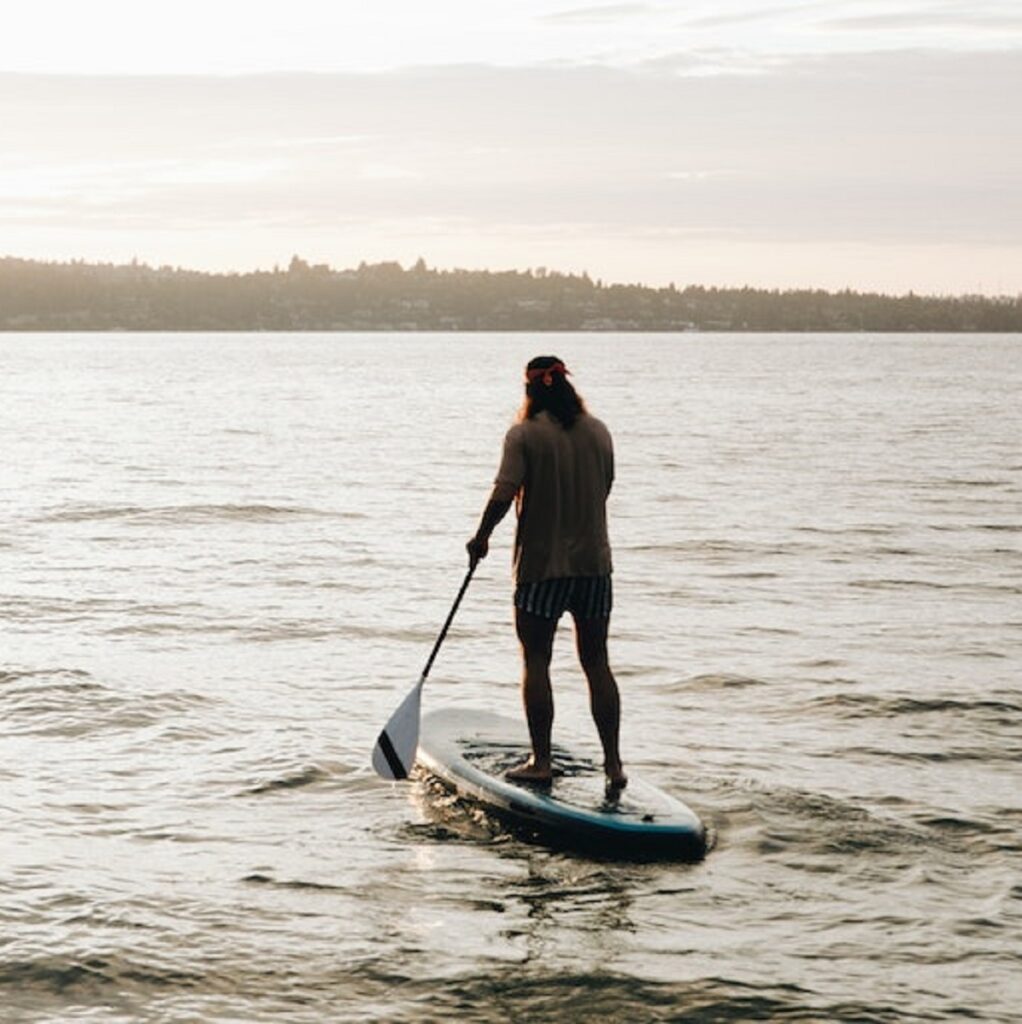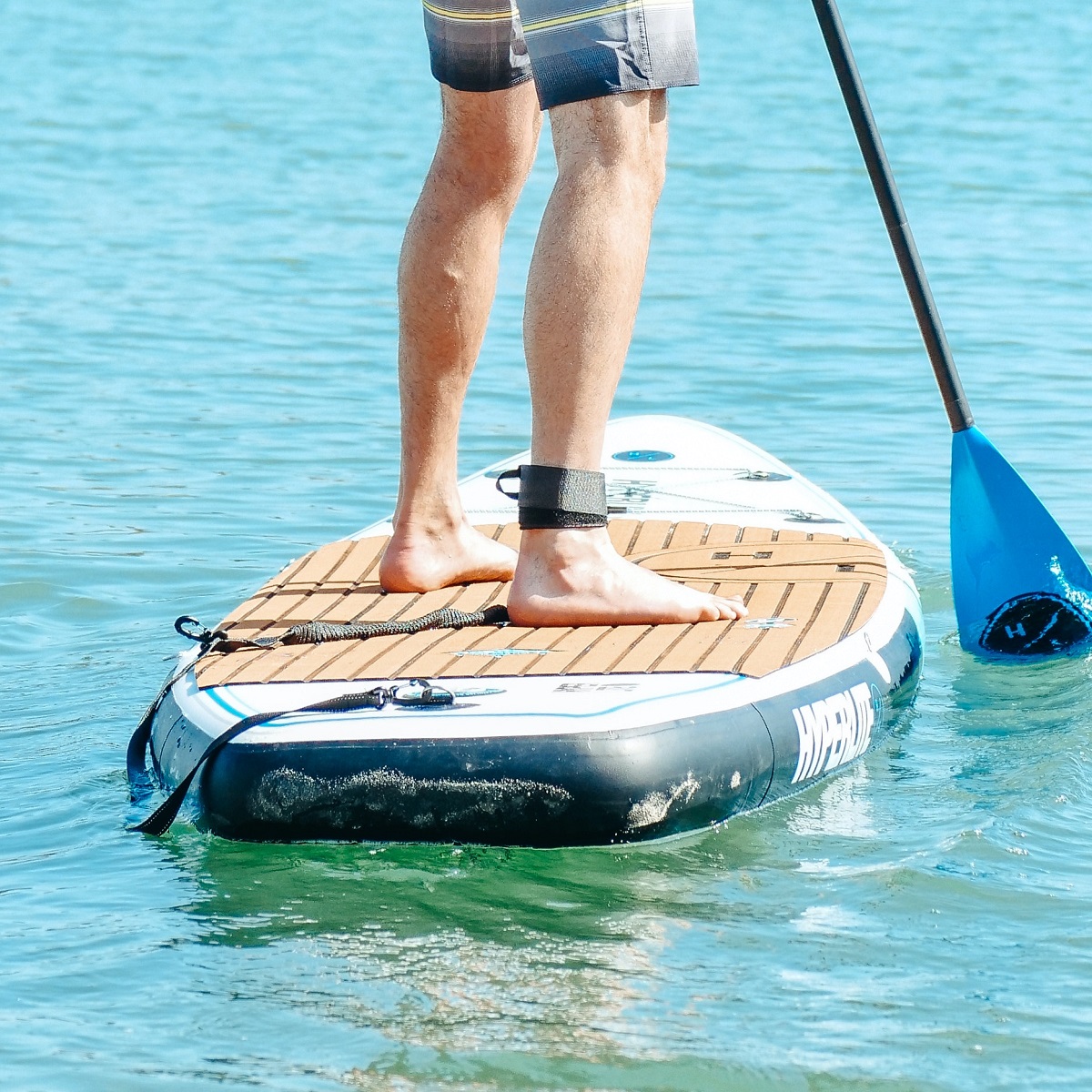If You’ve Never Been On A Stand Up Paddle Board Before, You Should Know These Essential Tips Before Heading Out! These Will Help You Be More Efficient (And Safer) On Your Board.
Having the proper Stand Up Paddle Boarding technique (SUP technique) will make all the difference as you move through the water on a stand up paddle board. To begin with, you should make sure that your paddleboard and paddle are sized for your height and appropriate for your fitness level. We’ll explore gear in more detail in another post. But if you’re just getting started, you should definitely check out our post on the # 1 safety item you need before you head out paddling!
It’s best to get started on flat water, if possible, so you can get acquainted with the board and your paddling stroke before planning any bigger adventures. Wind and weather can affect water conditions without much warning, so as a beginner, it’s best to paddle along the short line, so you can quickly and easily get off the water when needed.
Tips For Proper Paddle Board Technique
SUP (Stand Up Paddle Board) Technique Basics:
- Stand in the center of your board (so your body weight is centered on the board – not too far forward or too far back)
- Hold the paddle facing the right way (if you view a paddler from the side, the line of the paddle should point down toward the water with the bend of the blade pointing toward the front of the board, not the rear).
- Position your hands on the paddle so that you are holding at the top of the paddle with one hand, and roughly halfway down the shaft of the paddle with the other. If you raise the paddle horizontally overhead while gripping the paddle, your arms should make 90 degree angles with the paddle shaft.
- Ensure that the paddle is entering and exiting the water in the proper locations for the most efficient stroke. Submerge the paddle blade out in front of you, and right alongside your board (not at a diagonal / too far out to the side). Bending (and using your core muscles), you’ll pull the paddle through the water and bring the blade fully out of the water when it’s in line with your feet.
There are many additional nuances to paddle stroke, and many different strokes to learn. Especially when you’re ready to learn turning maneuvers for a SUP! However, if you can master these basics, you’ll be well on your way as a beginner. The key is to avoid starting out with bad habits that will be hard to break later on… and being aware of the most common mistakes that newbie SUPers tend to make.
This video (by blueplanetsurf) is a really nice intro video for anyone who has never been on a paddleboard before.
If it’s not your first time, or you feel you have a general handle of the basics… this next video may be helpful. It goes through some common mistakes you might not even realize you’re making!
This video, courtesy of SUPboarder’s YouTube channel, nicely demonstrates proper technique in a bit more detail. This is the video for you once you have the basics down, but wish to explore each of the 5 phases of paddle stroke in detail.
The techniques demonstrated here will help you paddle more efficiently, straighter, and with more core engagement. If you utilize these tips, you notice major improvement in the water!
Finally, for a bit of safety… as you’ll see in the video above, it’s incredibly important to wear a leash for your board. If you fall off, and water or wind conditions pull the board away from you, this can be a dangerous situation.
If you are on the ocean or in cold mountain water (where you can quickly become hypothermic), this scenario can be deadly. Wear a life jacket and a leash for your SUP, and you’ll never have to worry about being stuck in the water without your board.
There’s a lot more to learn when it comes to Paddle Boarding, but for a beginner learning how to SUP for the first couple of times on the water, the basics covered here will be a huge help.
Enjoy!
You Might Also Like:


